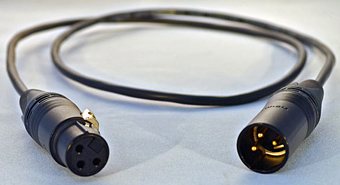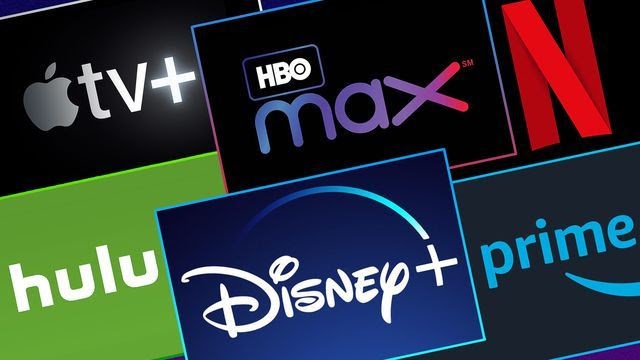Audio Cable Impedance: Use Digital Cable for Digital Applications

Belden 1800B digital audio cable, which also works well for analog audio
ALEXANDRIA, VA.—As television engineers age, those brought up in the era of analog signals and the subsequent transition to digital are retiring and talking hard-earned knowledge with them. Younger engineers (when they are hired) often have stronger IT backgrounds than audio/video backgrounds.
That’s probably good for some of the directions that television will go in the future, but many of these IT specialists have little understanding of cable impedance and its effect on signals. Many of these people will not realize the difference between cable designed for digital audio and analog audio, and this brings up the possibility that someone could plug an old analog cable into a digital line and suffer the consequences.
Furthermore, although North America, Europe and advanced countries in the Pacific region have transitioned to digital, much of the world has not. Many of the places yet to convert to digital have long traditions of wearing out their gear and physical plants before replacing them. When it comes to audio cables, digital and analog varieties with XLR connectors look more-or-less identical, but their performance is significantly different.
Everyone working in video knows that video cables have a characteristic impedance of 75 Ohms, and most probably realize that pinching a video cable (such as using an overly tight cable tie to hold it in place) can change the impedance at that point. And most know that impedance changes lead to signal reflections, loss of signal and distortion.
Just as it is with video cables, audio cables have a characteristic impedance and they are also subject to the same impedance changes when poorly installed and handled. In the case of AES/EBU digital audio, the standard calls for 110-Ohm cable, although it looks much like audio cable that’s been used for decades to carry analog audio. The typical broadcast-quality analog audio cable has a characteristic impedance of 45 Ohms.
ALMOST LIKE DC
Get the TV Tech Newsletter
The professional video industry's #1 source for news, trends and product and tech information. Sign up below.

Audio cable with XLR connectors for analog use can look identical to a cable for digital use, but an analog cable can kill a digital feed. In the analog world, audio is relatively low frequency and it behaves almost like DC. Obviously, the higher the frequency gets, the more like RF the signal acts. A quarter-wavelength at 1,000 Hz is approximately 75,000 meters (roughly 47 miles), so the effects of an impedance reflection in a 100-foot analog cable will be minimal.
It’s a different story with digital audio, which can include waveforms that are as high as 25 MHz.
“25 MHz has a quarter-wavelength of 3 meters (10 ft.),” said Steve Lampen, a multimedia technology manager at Belden, a St. Louis, Mo.-based manufacturer of cable. “If you cinch down wire ties at precisely 10 ft. you might be able to see [negative effects]. More likely, if you use a patch cable that is the wrong stuff (i.e., microphone cable) with the wrong impedance, and it is at least 10 feet long, you will definitely see that.”
So what are these effects?
“Impedance problems show up as reflections (“return loss”), so the level will drop dramatically,” Lampen said. “It will look like the cable had a lot of attenuation, which in fact, is reflection.”
The result could be that a digital audio run of a couple hundred feet that’s kinked or overly cinched could have enough signal loss to prevent the signal from reaching the end. This is exacerbated when an analog audio cable is patched into a digital line.
GET RID OF ‘EM
As wasteful as it sounds, if you have a digital plant and still have lots of analog patch cords or older cables with XLR connectors that seemingly fit, it’s best to either clearly mark the analog cables in an unmistakable way or to simply get rid of them. If you are having problems with digital audio passing down cable lengths that should be acceptable, look carefully for analog interlopers, such as patch cables and gender-changers that use analog-rated connectors.
If you still need to connect analog devices to your system (such as a microphone or an older device with analog audio), a modern digital cable with XLR connectors will work fine. For more information about installing and working with digital audio cables, Belden’s Lampen has a book from Mc Graw-Hill titled “The Audio/Video Cable Installer’s Pocket Guide,” which has separate chapters on analog and digital audio.
By the way, the restriction about using analog cable in a digital feed doesn’t work in the opposite direction. It’s perfectly acceptable to use a digital audio cable for an analog feed — in fact, audio cable made for digital service is better with analog signals than analog-only rated cable. Digital cable will have less attenuation at high analog frequencies than does cable built specifically for analog operation.
Bob Kovacs is the former Technology Editor for TV Tech and editor of Government Video. He is a long-time video engineer and writer, who now works as a video producer for a government agency. In 2020, Kovacs won several awards as the editor and co-producer of the short film "Rendezvous."

